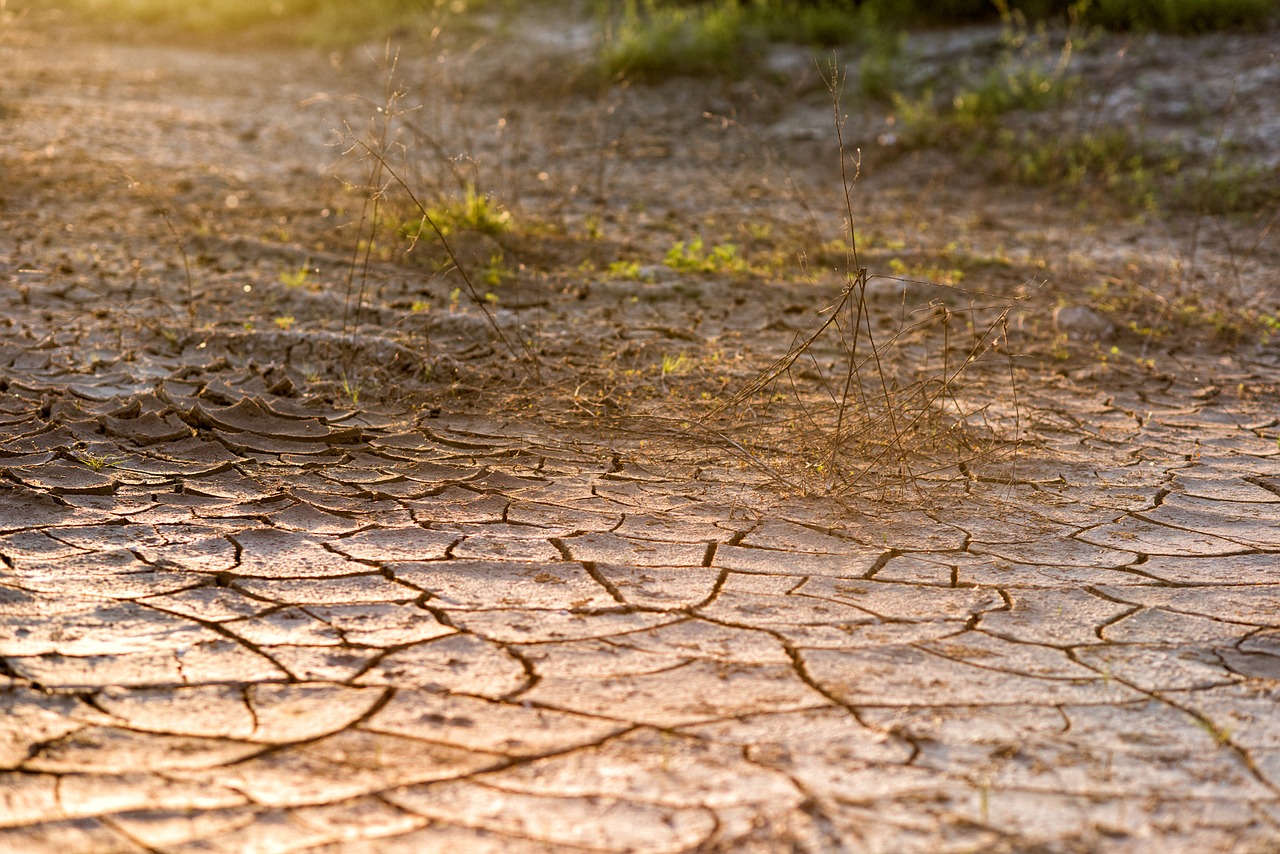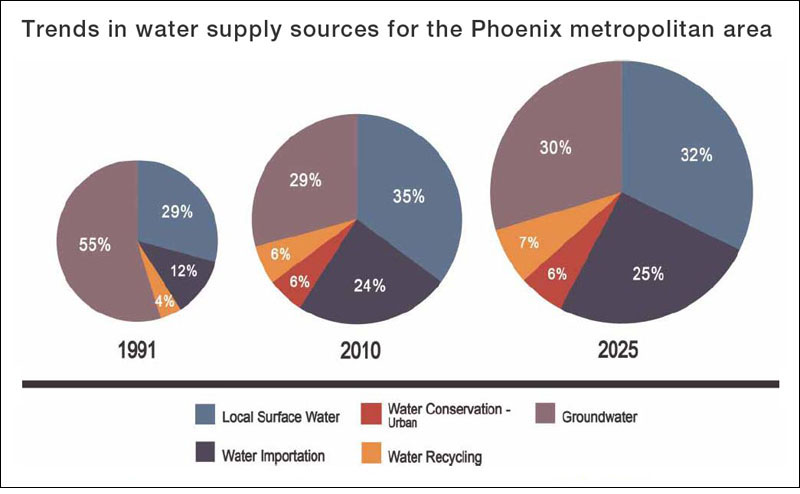
The flash floods that have hit Colorado and the repeated storms and inundations in North Dakota earlier in 2013 make it easy to forget that the American West and Midwest have struggled through significant drought conditions over the last several years. States with fast-growing cities face particularly difficult situations, with conflicts between urban and rural areas on the rise as water resources shrink.
Particularly troubling are the results of a study published in June in the Proceedings of the National Academy of Sciences. It indicates that sections of the Ogallala Aquifer in the High Planes, which nourishes a significant proportion of the wheat, corn and cotton grown in the United States, are being depleted at alarming rates. At current rates of water use, farm production is projected to peak in 2040 unless dramatic changes are made, particularly by increasing conservation measures.
The Colorado River basin is another example: The river is the source of water for more than 30 million people in seven U.S. states as well as 4 million acres of agricultural land. Yet research indicates that by 2035, average streamflows could decrease by 3%. Major population centers in the basin include Las Vegas, Phoenix and Tucson, all of which will see significant growth during that time. Other major U.S. cities face similar challenges: During the 2011 drought, inflows to the Highland Lake reservoirs above Austin, Texas, fell to 1% of their annual average; while 2012 was a less severe year, a Stage 2 drought was declared. Increased energy exploration is also playing a role: the “fracking” process used to extract natural gas and shale oil demands significant amounts of water, and what drillers take isn’t available for cities and farmers.
In response to the declining availability of surface water, users have been increasingly turning toward groundwater, but the strategy is showing its limits: For example, 60% of U.S. irrigation depends on aquifers, but if current trends continue, as much as 35% of the southern High Plains will be unable to support irrigation within the next 30 years. A 2013 study from the U.S. Forest Service, Princeton University and Colorado State University indicates that climate change could substantially increase water losses due to rising evaporation and cooling demands, worsening an already difficult situation.
The question becomes what cities and their surrounding regions can do. A 2013 study in Water Policy, “Tapped Out: How Can Cities Secure Their Water Future?” looks at four municipalities — Phoenix, Arizona; San Antonio, Texas; San Diego, California; and Adelaide, Australia — to better understand how their water supply and management strategies have evolved over time. The researchers, at the Nature Conservancy, University of Virginia and University of Minnesota, note that “half of all cities with populations greater than 100,000 are located in water-scarce basins, and in these basins agricultural water consumption accounts for more than 90% of all freshwater depletions.” The study provides historical insight as well as a list of best practices that other cities and towns can use as a sourcebook.
The study’s findings include:
- A similar pattern of water development was observed in the four cities,: Local surface and groundwater supplies are exhausted; water is imported from other basins; recycling of wastewater or stormwater is introduced; and desalination of seawater or brackish groundwater is considered.
- The substantial exploitation of freshwater sources leads to ecological damage, health problems and economic impacts: “Groundwater depletion has led to increased electricity costs for pumping and to socio-economic disruption. When cities extend their reach into other basins to access water supplies, they spread negative impacts over great distances.”
- “Demand management through water conservation has mitigated, to varying degrees, the timing of water-system expansions and the extent to which cities rely on new sources of supply. This typical water development pattern in cities is undesirable from a sustainability perspective, as it is usually associated with serious ecological and social impacts as well as sub-optimal cost effectiveness.”
- “[The] future water supply plans in our four case study cities suggests another important trend: A return to local water options. Water importation is rapidly losing its appeal both because it is expensive to move water over long distances (owing to high energy costs) and because other basins are also experiencing water scarcity. It is clear that continuing to search for a distant oasis is simply not a sustainable strategy from economic, social and environmental perspectives.”
- “Considerable untapped potential exists for cities to form partnerships with agricultural water users to reduce water consumption on farms, thereby freeing up additional water supply for urban use while potentially reducing the water-related costs of farming, as well as farming’s vulnerability to water shortages. Considerable precedence exists for such urban–rural collaboration, e.g., through ‘payments for environmental services’ (PES) that compensate rural communities for providing water benefits to urban or corporate interests.”
- “Substantial cost savings (typically 50% but often much more) [are] associated with conservation strategies, as compared to other local supply options…. Despite the cost and energy savings associated with water conservation, cities have only begun to tap its potential.”
- The first place to look for water savings is urban and agricultural irrigation: “For example, Adelaide, San Diego and Phoenix continue to use more than 50% of their water to irrigate landscape areas and golf courses. These cities can look to San Antonio, which had cut its outdoor use by 30% by 1995, or the Irvine Ranch Water District in California, which cut its outdoor use by 46% from 1992 to 2004.”
The inter-dependency between cities and farms suggests that there is considerable opportunity for the two to form water partnerships, the researchers state. “If cities could help farmers consume less water, this could free up a new source of water supply for the city while potentially improving the price and reliability of agricultural products.”
A useful site for policymakers as well as journalists covering these issues is the United States Geological Survey’s National Water Census. The site’s goal is to build “national capacity to scientifically assess, account for, and analyze water availability. This includes new and improved methods of accounting for human factors and environmental/ecological criteria that affect water management decisions.”
Related research: A study from the Yale School of Forestry and Environmental Studies and the Harvard Kennedy School, “Comparing Price and Non-Price Approaches to Urban Water Conservation,” explores the cost-effectiveness, distributional equity, enforceability and political feasibility of the two approaches. Overall, it finds that using prices to manage water demand is more cost-effective than methods such as rationing.
Keywords: infrastructure, aquifer depletion, desalination, irrigation efficiency, river drying, urban-rural partnerships, urban water supply, water conservation, water scarcity, California

